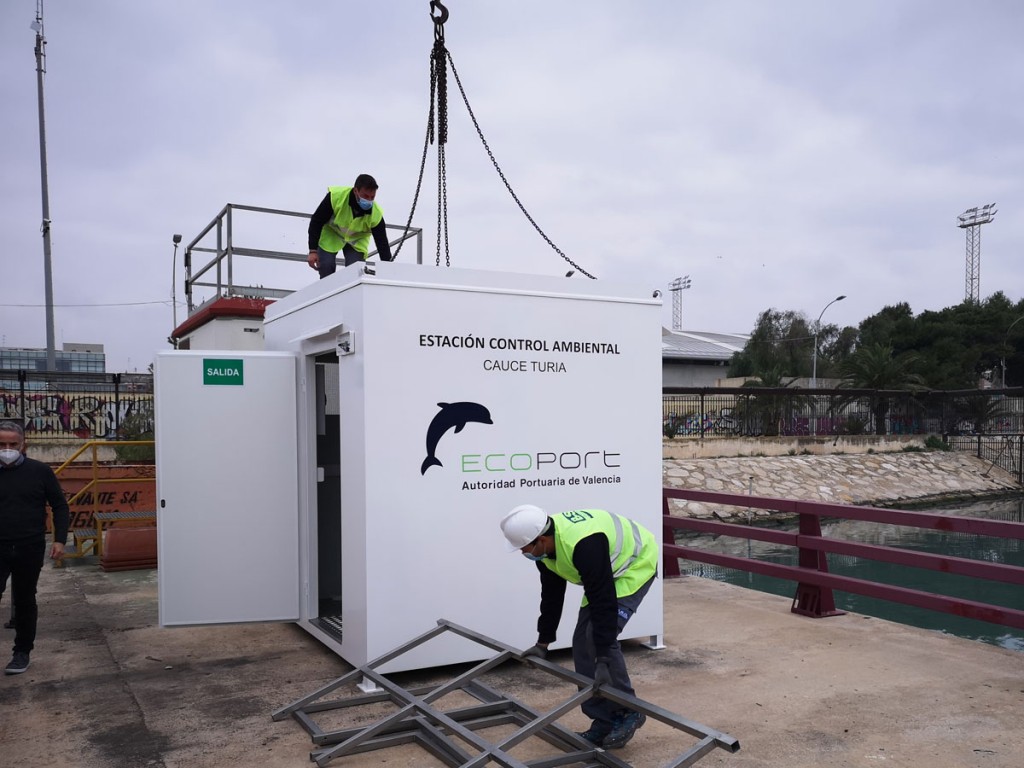Guaranteeing air quality in the facilities and areas near the Port of València is a priority objective of the Port Authority of Valencia. In fact, the Port of València has just installed two new environmental control booths which will analyze in real time the quality of the air, the noise in the port installations and the meteorological conditions to know the data on emissions from port activity and to continue with the continuous improvement in environmental matters. Through this monitoring, the Port Authority of Valencia (PAV) can articulate measures in the field of the fight against climate change and improve the planning of port operations if necessary to control emissions.

These new environmental control booths, in which the PAV has invested almost 300,000 euros, are installed on the esplanade of the old Turia riverbed and on the Transversales de Poniente quay; sites selected by the Centre for Environmental Studies for the Mediterranean (CEAM), a foundation of the Generalitat Valenciana for research, technological innovation and improvement of the environment.
These cabins are equipped with the most complete technology for monitoring atmospheric pollutants: they have five gas analysers that analyse the concentration of sulphur dioxide (SO2), nitrogen oxides (NO2/NO/NOx), ozone (O3), carbon monoxide (CO) and PM10 and PM2.5 particles. They are also equipped with a weather station to measure wind speed and direction, rainfall, solar radiation, temperature, relative humidity and barometric pressure. They are also equipped with sound level meters to measure the noise levels in the harbour. All the data collected by this diversity of equipment is received in real time, allowing the establishment of indicators to monitor both air quality and noise.
This initiative is part of the GREEN C PORTS project which is coordinated by the Valenciaport Foundation and co-financed by the European Union, a development in which several European ports participate to test innovative IoT technologies, Big Data, denominations and abbreviations in English referring to predictive analysis by means of artificial intelligence models.
These new cabins complement the PAV's entire environmental monitoring network for the control of environmentally friendly installations. Thus, these new environmental control booths are part of this extensive network that also has three weather stations, a dozen environmental sensors, predictive and static noise maps, a network of sound level meters, daily water cleaning and periodic studies on water quality, among others. In this sense, the objective of the PAV is to continue reinforcing its commitment to sustainability through innovative solutions to analyse air quality, and to offer information to the port community and the Port's neighbours in an active and regular manner.
Excellent quality
On the other hand, it should be noted that the cabin of the Port of València (AP MT Ponent) connected to the Monitoring Network of the Generalitat Valenciana indicates that since the beginning of 2021, of the 56 days analysed, the result has been 46 days with "excellent" quality and 10 "good".
The website of the Regional Ministry of Agriculture, Rural Development, Climate Emergency and Ecological Transition establishes four categories for classifying air quality: excellent, good, improvable and poor. The data are available daily and by time slots at http://www.agroambient.gva.es/es/web/calidad-ambiental/datos-on-line.
According to the website, the Air Quality Indexes are a tool to "inform citizens in a clear and understandable way about the quality of the air we are breathing". This value is calculated from the pollutant data obtained from the automatic stations that make up the air pollution monitoring and control network. Specifically, to calculate the quality index "five most characteristic atmospheric pollutants are taken into account for which the current European regulations have established maximum permitted immission levels". These pollutants are: Sulphur Dioxide (SO2), Nitrogen Dioxide (NO2), Particles smaller than 10 microns (PM10), Carbon Monoxide (CO), and Ozone (03).










